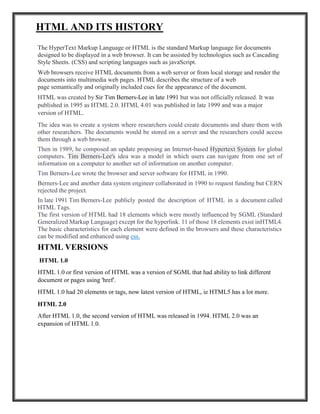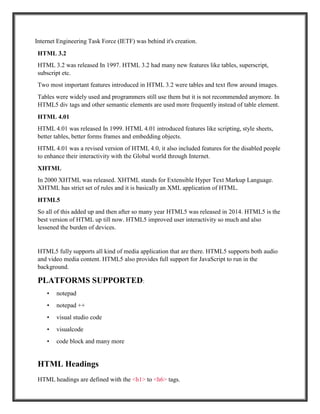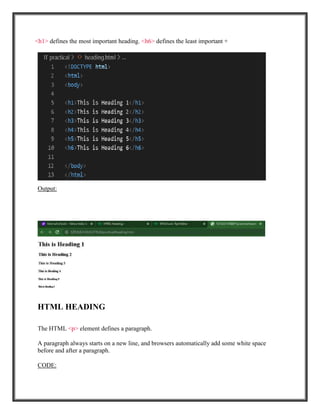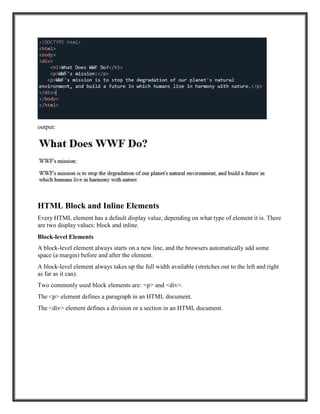HTML is the standard markup language used to create web pages and is made up of elements like headings, paragraphs, links, images, lists and tables that describe the structure of the page. It was created by Tim Berners-Lee in the late 1980s and early 1990s and has evolved through several versions with new features added. The latest version is HTML5 which supports audio, video and rich graphics on the web. CSS is used to style and lay out HTML elements and web pages can link to external style sheets or use internal and inline styles.


































